#Jurassic bivalve
Explore tagged Tumblr posts
Photo

Oppelia subradiata Ammonite Bivalves Belemnite Multi Fossil Block Jurassic Dorset COA
A fascinating multi-fossil block featuring a beautifully preserved Oppelia subradiata ammonite, accompanied by bivalves and a belemnite, discovered by our own team members Alister and Alison on 30 April 2025 at Burton Bradstock, part of the iconic Jurassic Coast in Dorset, UK.
This specimen originates from the Inferior Oolite Formation, a Middle Jurassic unit known for its fossil-rich marine sediments. Oppelia subradiata is a slender, evolute ammonite with fine ribbing and a compressed shell. It belongs to:
Order: Ammonitida
Superfamily: Haploceratoidea
Family: Oppeliidae
Zone: Often associated with the Garantiana Zone
Geological Stage: Bajocian (~170 million years ago)
Depositional Environment: Shallow marine oolitic shelf, warm carbonate-rich seas
This block is a wonderful representation of Jurassic marine life, combining different fossil groups in a single matrix, offering a mini paleo-ecosystem snapshot.
It has been expertly cleaned, prepped and treated by Alison. The photo in this listing shows the exact specimen you will receive, and includes a 1cm scale cube for size reference. Please refer to the images for full dimensions.
We guarantee the provenance and authenticity of all our fossils. All of our fossils are 100% genuine specimens and come with a Certificate of Authenticity (COA).
Perfect for collectors, educational use, or display, this multi-fossil block is both scientifically significant and visually striking.
Origin: Burton Bradstock, Dorset, United Kingdom
Formation: Inferior Oolite
Age: Bajocian Stage, Middle Jurassic (~170 Ma)
Species: Oppelia subradiata + bivalves + belemnite
Discovered by: Alister and Alison (30 April 2025)
Prepared by: Alison
Authenticity: 100% Genuine Fossil with COA
#Oppelia subradiata#fossil ammonite#multi fossil block#Jurassic Coast fossil#Inferior Oolite ammonite#Burton Bradstock fossil#Dorset fossil#Jurassic bivalve#Jurassic belemnite#authentic fossil#ammonite with bivalves#fossil UK#ammonite block#ammonite with COA#Oppelia ammonite#Jurassic marine fossil
0 notes
Text
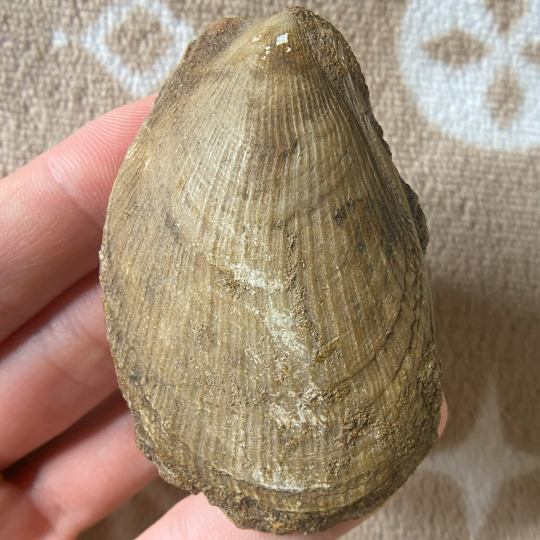
A bivalve fossil of an Antiquilima succincta from the Frodingham Ironstone in Coningsby, Scunthorpe, Lincolnshire, England. This Lower Jurassic aged bivalve is found in various regions of Europe.
#bivalve#fossils#paleontology#palaeontology#paleo#palaeo#antiquilima#limidae#jurassic#mesozoic#prehistoric#science#paleoblr#ミノガイ科#二枚貝#化石#古生物学
4 notes
·
View notes
Text
my paleo prof:
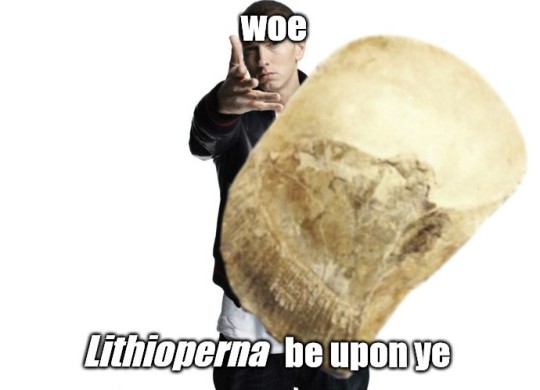
#paleontology#paleontology meme#Lithioperna sp.#bivalve#this is the most niche one yet#shoutout to all my lower-jurassic marine life of the dinaric area
10 notes
·
View notes
Text
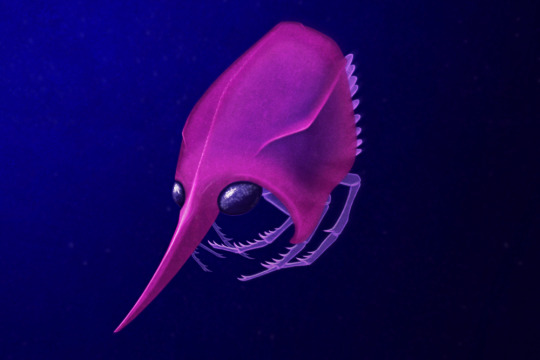
The enigmatic thylacocephalans were a group of bizarre little arthropods, found in marine deposits all over the world from the late Ordovician (~435 million years ago) to the late Cretaceous (~85 million years ago). They had shield-like bivalved carapaces, large compound eyes, three pairs of spiny grasping limbs, and multiple pairs of small paddle-like swimming limbs, but details of their internal anatomy are poorly known and their evolutionary relationships to other arthropods are still very uncertain.
Traditionally they've been classified as crustaceans, possibly as close relatives of remipedes or malacostracans – but they've also recently been proposed as instead being part of a much more ancient branch of arthropods, potentially related to stem-mandibulates like Acheronauta.
Falcatacaris bastelbergeri was a thylacocephalan living during the late Jurassic, about 150 million years ago, in what is now Germany. Around 2.5cm long (~1"), its carapace had tiny interlocking square "teeth" resembling a zipper along the hinge line between the two valves, a ridge along each side, and a long pointed knife-shaped spine at the front.
Like other thylacocephalans it was probably a swimming predator, likely nocturnal or hunting in murky conditions based on its enlarged eyes, and would have captured smaller aquatic prey using its raptorial limbs.
———
NixIllustration.com | Tumblr | Patreon
References:
Braig, Florian, et al. "A new thylacocephalan crustacean from the Upper Jurassic lithographic limestones of southern Germany and the diversity of Thylacocephala." Palaeodiversity 12.1 (2019): 69-87. https://doi.org/10.18476/pale.v12.a6
Laville, Thomas, et al. "Morphology and anatomy of the Late Jurassic Mayrocaris bucculata (Eucrustacea?, Thylacocephala) with comments on the tagmosis of Thylacocephala." Journal of Systematic Palaeontology 19.4 (2021): 289-320. https://doi.org/10.1080/14772019.2021.1910584
Pulsipher, Mikaela A., et al. "Description of Acheronauta gen. nov., a possible mandibulate from the Silurian Waukesha Lagerstätte, Wisconsin, USA." Journal of Systematic Palaeontology 20.1 (2022): 1-24. https://doi.org/10.1080/14772019.2022.2109216
Wikipedia contributors. “Thylacocephala” Wikipedia, 07 Nov. 2024, https://en.wikipedia.org/wiki/Thylacocephala
#science illustration#paleontology#paleoart#palaeoblr#falcatacaris#thylacocephala#crustacean#maybe#mandibulata#arthropod#invertebrate#art#actual ancient aliens#that is an excellent snoot
358 notes
·
View notes
Text
Round 3 - Chondrichthyes - Heterodontiformes




(Sources - 1, 2, 3, 4)
While several extinct genera of Heterodontiformes are known from the Jurassic, today only one genus, Heterodontus, the “Bullhead Sharks” remains. Ten living species of bullhead shark have been described.
Bullhead sharks are relatively small, with the largest species reaching just 1.65 metres (5.5 ft) in maximum length. They have tapered bodies, with blunt, proportionally large heads, relatively small mouths, pig-like snouts, and pronounced ridges above their eyes. They have two large dorsal fins, the first larger than the second, and an anal fin. Both dorsal fins have a rigid spine at the front of each fin which is used for defense. Bullhead Sharks are bottom feeders in tropical and subtropical waters. They have cusped grasping teeth at the front of the mouth, and flattened teeth at the back of the mouth. They use the flattened teeth at the back of their mouth to crush hard-shelled prey like bivalves, crustaceans, and sea urchins, and the grasping teeth on soft-bodied prey like worms, anemones, and octopuses. They hunt at night by "walking" along the sea floor with alternating motions of their pectoral and pelvic fins.
Bullhead shark egg cases are shaped like an auger, with two spiral flanges. This allows the egg cases to become wedged in the crevices of rocky sea floors, where the eggs are protected from predators; however, some bullhead sharks deposit their eggs on sponges or seaweed. Due to their spiral shape, each egg case requires several hours to rotate out of the mother shark's cloaca (Oof). She usually lays two at a time. The eggs typically hatch after 7 to 12 months, depending on the species. The pups will usually reach over 14 cm in length by the time they leave the egg case.
The Heterodontiforms appear in the fossil record in the Early Jurassic, with modern forms appearing in the Late Jurassic. Despite the very ancient origins of the genus, phylogenetic evidence indicates that all living species in the genus arose from a single common ancestor that survived the K-Pg extinction.

Propaganda under the cut:
Female Japanese Bullhead Sharks (Heterodontus japonicus) are known to deposit their eggs in communal nests, with as many as 15 eggs left in the same nest.
Horn Sharks (Heterodontus francisci) (image 2) have relatively small territories they hunt in at night, returning to the same “house” during the day. They may remain faithful to the same territory for over a decade. Now that’s a homebody.
Horn Sharks are queued by light rather than by an internal clock. In laboratory settings, they will become active as soon as lights are turned off. If they are in the middle of something when the lights are turned on, they may stop swimming and sink to the bottom. In one experiment where the sharks were kept in darkness, they remained continuously active for 11 days before slowing from fatigue. (☹️)
The Horn Shark generates the highest known bite force relative to its size of any shark, which it uses to crack into mollusks, echinoderms, and crustaceans. One study found the average bite force for this species in the wild to be 95 N with a maximum of 135 N, while under experimental conditions sharks could be induced to bite with over 200 N of force.
Female Horn Sharks in the wild pick up their egg cases in their mouths and wedge them into crevices to keep them safe.
In July 2018, three people were arrested after stealing a juvenile Horn Shark from the San Antonio Aquarium. The shark was scooped out of its tank and smuggled out of the aquarium in a stroller, wrapped in a wet blanket. It was thankfully returned unharmed two days later.
The Crested Bullhead Shark (Heterodontus galeatus) (image 4) produces spiral-shaped egg capsules that are secured to seaweed or sponges with long tendrils.
The Crested Bullhead Shark is a major predator of the eggs of the Port Jackson Shark! Individual sharks have been observed taking the egg capsules in their mouths and chewing on the tough casing, rupturing it and allowing the yolk to be sucked out, or simply swallowing the capsules whole.
The Port Jackson Shark (Heterodontus portusjacksoni) (image 1) is a migratory species, traveling south in the summer and returning north to breed in the winter. Males tend to arrive to the breeding grounds first with the females arriving later and staying later, perhaps as a means to reduce egg predation upon their newly laid eggs.
While juvenile Port Jackson Sharks are not particularly social, adults are often seen resting in caves in groups, and prefer to associate with specific sharks based on sex and size. In lab settings, these sharks were shown to have unique personality traits and preferences, can be trained, can count, and can learn by watching other sharks.
66 notes
·
View notes
Text

Patreon request for rome.and.stuff (Instagram), and my first plesiosaur (well, first since I was like… 10)
Pliosaurus funkei!
Pliosaurs were a family of plesiosaurs that eventually lost their stereotypical long-necked, small-headed body plan. Resembling the mosasaurs that would come much later, pliosaurs had short necks with large, strong jaws, and fed on fish, cephalopods, and marine reptiles. The type genus, Pliosaurus, contains at least 6 species. The first and type species, P. brachydeirus, was described and named by Sir Richard Owen in 1841.
Between 2004 and 2012, a new species of Pliosaurus was in the process of being uncovered. Before it was formally described or even named, news of this giant sea monster escaped into the general media and it was dubbed “Predator X”.
This Predator X prompted a media frenzy… there were articles estimating its size based on the fragments found so far, a 2009 television special on the History channel, and a segment in the 2011 BBC documentary series “Planet Dinosaur.”
Predator X was reportedly the “most fearsome animal ever to swim in the oceans!”
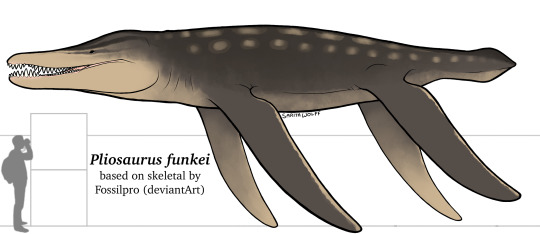
When Pliosaurus funkei was finally formally described and named in 2012, it was found to be a bit smaller than the giant 15 meter long estimate being thrown around. However, it was still a very large animal, around 10–12 m (33–39 ft) long with a 2.0–2.5 m (6.6–8.2 ft) long skull. It also had very long flippers, probably to aid in maneuverability and speed. Analysis of Pliosaurus funkei’s skeleton show that it likely used its front flippers to cruise, only using its back flippers for quick bursts of speed when pursuing prey. Analysis of its brain case shows that its brain was proportional to that of a modern great white shark. So while it didn’t quite beat the Late Cretaceous 12–15.8 meter (39–52 ft) long mosasaur Tylosaurus, the Early Miocene to Late Pliocene 10.5-20.3 meter (34-67 ft) long shark Otodus megalodon, or even the modern day 11-16 meter (36-52 ft) long Physeter macrocephalus (Sperm Whale), it was still no doubt the apex predator of its time and environment.
Pliosaurus funkei lived in the last era of the Late Jurassic in the icy waters of Norway. Found in the Slottsmøya Member of the Agardhfjellet Formation, it would have lived in a cold, shallow sea rife with methane seeps. These methane seeps supported a high amount of diversity, and the Slottsmøya was teeming with ammonites, bivalves, gastropods, brachiopods, tubeworms, echinoderms, cold water sponges, and more. Many icthyosaurs and plesiosaurs would have enjoyed feeding on the plentiful invertebrates here, as well as each other. Pliosaurus funkei would have likely fed on other plesiosaurs like Colymbosaurus, Djupedalia, Ophthalmothule, and Spitrasaurus, as well as icthyosaurs like Cryopterygius, Undorosaurus, Arthropterygius, Nannopterygius, and Brachypterygius.
#my art#SaritaDrawsPalaeo#Pliosaurus funkei#Pliosaurus#pliosaur#predator x#plesiosaurs#sauropterygians#reptiles
86 notes
·
View notes
Text
look there's not ganna be any art for the next couple weeks (exams >:|)so I offer my favourite specimens in my collection :D
(did anyone think a rock post is what would substitute the lack of art)
gryphea - brachiopod looking bivalve (silly)

brachiopods (unspecified) - both jurassic in age found in the same place a year apart


obsidian furnace slag - admittedly this isn't in my collection bc it's full of lead but it is pretty

I've got a lot more n some rlly nice corals (if people wanna see I'll share em but I don't have the photos sitting on my phone) but I'd love to find an ammanoid or trilobite n hopefully in the spring I'll get some neat igneous specimens
tbh I think my favourite are the fossils of the small stuff yk, I'm never ganna find a full dinosaur but I will find a full brachiopod or coral
6 notes
·
View notes
Text
Project Dato: Syndermates of Dato (V.2)
Syndermates are a clade of animals that on Earth includes rotifers and spiny-headed worms. While typical syndermates do exist, more basal forms descended from a Cambrian stem-group have assumed various macroscopic forms, with many of the Scopalian syndermates being reef-builders alongside diatoms, annelids, bivalves, sponges, and stony coral.
Because these forms were common during Dato's Cambrian, said period is sometimes called the Rotifian period.


Due to the constraints of diffusion at such a large size, many have evolved gills or pocket lungs, though Scopalians lack gills.
Most macroscopic syndermates belong to the clade Macrosyndermata which includes the phylums Labiocoronae and Scopalia. The Triffidia, on the other hand, are believed to be a sister clade to Seisonida+Acanthocephala.
Labiocoronae includes the following classes:
Aromascolecida (spice worms and glue worms), burrowing worms that are usually filter-feeders though the species depicted are active predators. They can be as small as the average earthworm or as large as a saltwater crocodile if not slightly larger. The name spice worm stems from the highly valued substance known as Zaipu or "spice" obtained from the glands of some large species. Unfortunately, those species tend to be very territorial. Glue worms produce a non-Newtonian mucus from their retrocerebral organ which aids in prey capture.
Kartupelida (potato worms and carrot worms) are a class of macrosyndermates who have eversible mouthparts that are used to feed on plankton and detritus. They are simultaneous hermaphrodites, meaning they all produce both sperm and eggs, though they are not self-fertilizers.
Synocoronida is a class of simplistic macrosyndermates that includes the raspworms and the hexapoderos. The former (top) is a lineage of herbivores that resemble slugs, flatworms, and a few convergent clades exclusive to Dato. The latter are a type of gill-bearing synocoronids that use their mucus as a net to capture small organisms.
Musculopoda is a class of six-limbed macrosyndermates that converged with panarthropods which they were thought to be closely related. The main difference is that musculopods can't molt, instead their outer skin grows with them. The largest musculopods are the size of a medium-sized pig.
Scopalia includes the following classes:
Floroscopalia (anemonots and "true" scopals) is a class of Scopalians similar to corals and anemones. In the case of the former, they are colonial organisms that feed on small animals and sugar provided by algal symbionts. Unlike anthozoans, they cannot reproduce by budding. They make up 35% of reefs on Dato.
Crinoscopalia (lily scopals) includes many stalked and unstalked forms. All Crinoscopalians are suspension feeders that feed on detritus and plankton. Despite their sessile appearance and relation to the sessile Floroscopalia, Crinoscopalians are capable of locomotion, albeit very awkward. They are mostly freshwater.
Calamozoa (reed animals) includes many cosmopolitan clades characterized by their long bristly mouthparts that are adapted to pull in plankton and other small animals. Despite supposedly appearing immobile, they are capable of relocating if needed (tiny legs under that).
Echinoscopalia (echines) contains motile forms resembling sea urchins. The some are predators of molluscs and sponges while others are primarily herbivores, much like their counterparts. Some forms will integrate toxins from their diet into their own bodies. They were originally saltwater animals though ever since true urchins appeared during the Jurassic Wave, most echines became freshwater animals.
Shogosozoa (shoggoths) contains the most unusual forms on Dato, highly motile predators that are similar to octopodes. Due to being sensitive to light, they are found in locations with low amounts of light. Unlike octopodes, they can consume prey whole as their brain does not surround their esophagus. They live in habitats ranging from caves, deep sea floors, murky bodies of freshwater and dark forests.
The last clade we will go over are the Triffidia, an enigmatic subphylum of terrestrial plant-like syndermates that may have appeared during the mid-late Paleozoic. Motile triffids have slow metabolisms and are photoheterotrophs.
Three classes are known, Stygiphyta (sessile tree-like forms endemic to Makai and Jigoku, have a larval stage), Magnolitriffidia (magnoliid-like triffids), and Eutriffidia (derived forms). The most well known eutriffid is the vegetable lamb, a photo-omnivorous animal in the order Pecophyta. The vegetable lamb is an important form of food in some places since it is basically animal and plant, so crop and livestock.
Shoggoths are inspired by this post.
Taxonomy of Syndermata
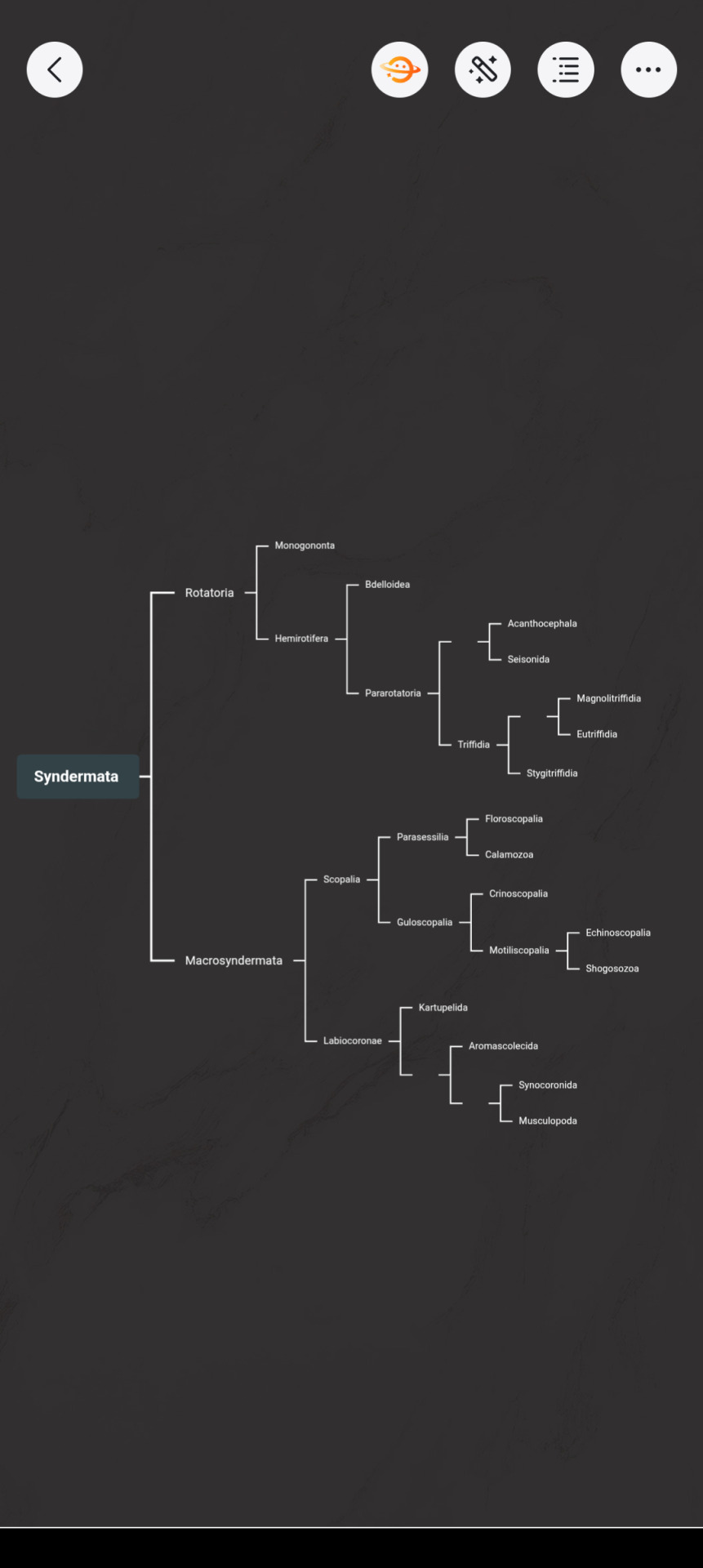
#speculative biology#worldbuilding#speculative evolution#creature design#animals#rotifer#invertebrates#animal#spec evo#speculative zoology
4 notes
·
View notes
Text

Jurassic fossils spotted by Sean Rice along the River Severn, in the UK. These include a large Gryphaea (Devil’s Toenail), crinoid ossicles, sea urchin fragments, a pyritised ammonite and bivalves.
0 notes
Text

As part of my job (environmental archaeologist) I find fossils every so often - mostly from the Jurassic. I'm the sort of autistic nerd to sort my collection and "grade" them. I've got my best bivalves, my ammonites and my A and B grade crinoids here from my latest collection efforts
#having a great time#archaeology#yes archaeology bc i find these in my job as an archaeologist#palaeontology#fossils#for reference the biggest ammonite is about 2cm wide with the smallest crinoid being about 1.5mm wide
1 note
·
View note
Photo

Double Oppelia subradiata Fossil Ammonite Block with Belemnite & Bivalve – Inferior Oolite, Jurassic Coast: Burton Bradstock, Dorset, UK
A beautiful and rare fossil block featuring two Oppelia subradiata ammonites preserved alongside a belemnite fossil and a bivalve shell, all originating from the famous Inferior Oolite strata of the Jurassic Coast, discovered at Burton Bradstock, Dorset, UK.
Species: Oppelia subradiata (ammonite)
Geological Unit: Inferior Oolite Formation
Geological Period: Middle Jurassic
Stage: Bajocian
Depositional Environment: Shallow marine, carbonate shelf
Order: Ammonitida (ammonite), Belemnitida (belemnite), Bivalvia (bivalve)
Family (Ammonite): Oppeliidae
These co-preserved marine fossils offer a rare glimpse into a Middle Jurassic marine ecosystem, showcasing predatory ammonites, belemnites (extinct cephalopods), and benthic bivalves. Oppelia subradiata is recognised by its finely ribbed, involute shell, and was an active nektonic predator.
This particular specimen was carefully discovered by our skilled fossil hunters Alister and Alison on 17 January 2025. It has been meticulously cleaned and prepared by Alison, revealing all the important structural details without compromising natural authenticity.
Notable Features: Rare multi-fossil association in single matrix
Zone/Biozone: Parkinsoni Zone (approximate, inferred from stratigraphy)
The photograph shows the actual fossil you will receive. The scale cube is 1cm – please refer to the image for full sizing.
All of our Fossils are 100% Genuine Specimens & come with a Certificate of Authenticity.
An excellent collector’s item or educational display piece, bringing together diverse marine fauna in one striking fossil plate from the iconic Jurassic Coast of the UK.
#Oppelia subradiata#fossil ammonite#belemnite fossil#Jurassic bivalve#Jurassic Coast fossil#Inferior Oolite#Dorset fossil#Burton Bradstock ammonite#fossil block#ammonite with belemnite#UK Jurassic fossil#genuine ammonite fossil#ammonite display specimen
0 notes
Text
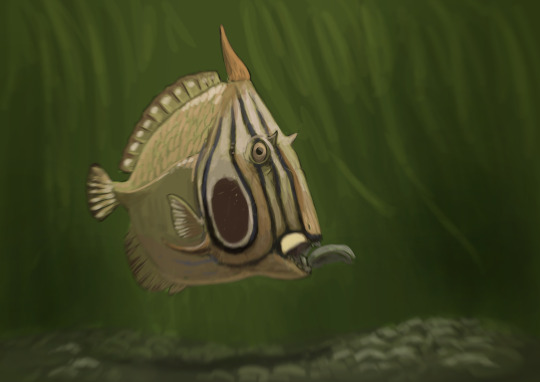


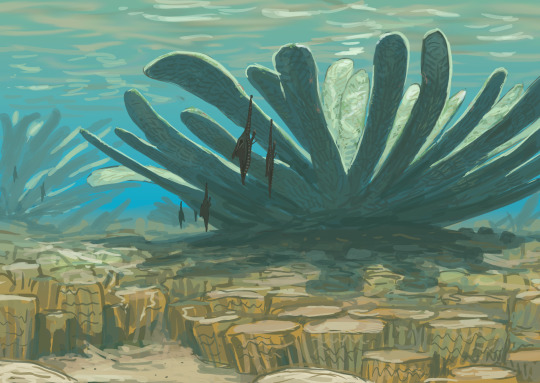
Results from the #paleostream Congopycnodus, Necrolemur (a #MonkeyCruise piece!), Elephas hysudricus and Chondrodonta (and very large bivalve)
#paleoart#sciart#pycnodont#lemur#monkeycruise#elephant#bivalve#primate#cretaceous#paleostream#photo#fossil fish#jurassic#palaeoblr
619 notes
·
View notes
Text
why are all the articles on the ecological selectivity of mass extinctions based on fucking bivalves im tired of reading abt molluscs n shit gimme some dinosaurs
#yes i know not all molluscs are bivalves let me die in peace#its not even like its all ordovician stuff even the jurassic articles are about bivalves >:(#there was One on sea urchins so thats fun i guess#just :(#.txt#okay i lied there was also one about tetrapods in the permian triassic extinction but it was about communities not specific genera#which is still cool and im putting it in my presentation but no dinosaur figures >:(#anyways i have to finish my powerpoint that im presenting tomorrow Yikes wish me luck
1 note
·
View note
Photo

The Giants - Part 8/11
Inoceramus - an extinct genus of bivalves that originated in the Jurassic, within which is the subgenus, Platyceramus, aka. the largest bivalves of all time. They could reach up to 3 m wide, meaning they could grow considerably larger than the giant clam (Tridacna) which is know to grow up to 1.14 m.
Ꞓ - O - S - D - C - P - T - J - K - Pg - N
Image Source: [X]
#palaeontology#invertebrate palaeontology#palaeoblr#paleontology#Jurassic#mollusc#bivalve#fossil#fossils#the giants#science#sciblr#biology#bioblr#geology
115 notes
·
View notes
Text

Strange Symmetries #10: Shellraiser
Brachiopods (also known as "lamp shells") superficially look very much like bivalves, but these two groups aren't very closely related to each other – although they're both lophotrochozoans, their last common ancestor probably lived sometime in the Ediacaran at least 560 million years ago, and their similarities in appearance are due to convergent evolution.
The two valves of their shells are also arranged differently. Bivalve shells grow on their left and right sides and are usually symmetrical, but brachiopods form their shells from the upper and lower surfaces of their bodies.
As a result brachiopod shells are usually unequal in size and shape but have their own plane of bilateral symmetry down the center – but some of them still managed to become asymmetrical anyway.
Torquirhynchia inconstans lived during the Late Jurassic, about 161-145 million years ago, in the warm shallow seas that covered what is now Europe and Iran. Around 3cm across (~1.2") it had a strongly ridged shell with an asymmetrical closing edge, positioned high on one side and low on the other.
This unusual uneven arrangment is thought to be an adaptation to living on soft sediments. Asymmetrical brachiopods like Torquirhynchia may have lived with one side of their body mostly buried into the seafloor, and twisted their shell edges so the still-exposed half was raised up to better function for water circulation and filter-feeding.
———
NixIllustration.com | Tumblr | Twitter | Patreon
#science illustration#paleontology#paleoart#palaeoblr#torquirhynchia#cyclothyrididae#rhynchonellida#brachiopod#brachiozoa#lophophorata#lophotrochozoa#invertebrate#art
330 notes
·
View notes
Text
Round Two: Stegouros vs Spicomellus
Stegouros elengassen
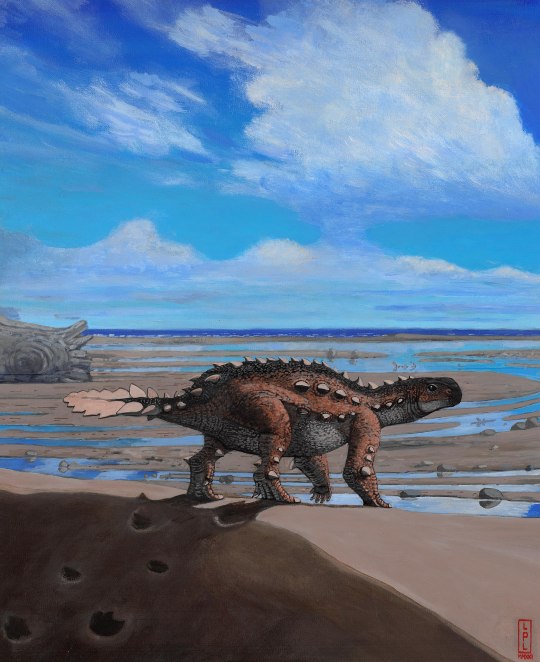
Artwork by Luis Enrique Pérez López, written by @zygodactylus
Name Meaning: Armored Creature with a Roofed Tail
Time: 74.9 to 71.7 million years ago (Campanian to Maastrichtian stages of the Late Cretaceous)
Location: Dorotea Formation, Patagonia, Chile
South America is just where the nonavian dinosaur party is happening these days! Stegouros is another recently described species from this continent, and another weird one - it was an Ankylosaur, but not a Nodosaur or an Ankylosaurid, and more to the point, instead of a tail club it had a series of vertebrae enclosed in osteoderms, in a shape that looked a lot like a macuahuitl - the tail was also very short, shorter than any other Thyreophoran, with flattened vertebrae coming together to form the strange and distinctive shape (similar short vertebrae are known from its relative, Antarctopelta). At around 2 meters long, it was very small for an Ankylosaur, though it had a head that was quite large for its body. It also had inward curving teeth, making them look vaguely hourglass-shaped, though they were also asymmetrical. It had many typical ankylosaur traits, but also some stegosaurian ones such as hollow sides to their vertebrae. Overall, it was very similar in proportions and appearance to Antarctopelta, indicating Antarctopelta may have looked more like Stegouros than previously thought. It had limb bones similar to cursorial Ankylosaurs, indicating Stegouros itself was a fast and efficient mover; and it even had claws shaped like hooves which may have enabled even more efficient running and locomotion. So, yeah. A short big headed ankylosaur built for running with a freaking ax on its tail. That’s normal! Living in the Dorotea Formation, Stegouros probably lived near the coast, alongside different sorts of mammals, fish, bivalves, amphibians, plesiosaurs, turtles, and unnamed dinosaurs such as opposite birds, megaraptors, Unenlagiines, and possible titanosaurs.
Spicomellus afer
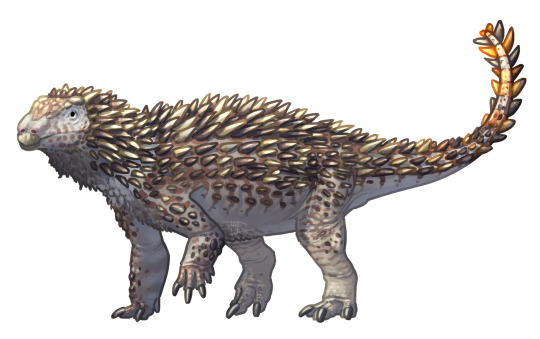
Artwork by @i-draws-dinosaurs, written by @zygodactylus
Name Meaning: African Collar of Spikes
Time: 168 to 164 million years ago (Bathonian to Callovian stages of the Middle Jurassic)
Location: Third Subunit, El Mers Group, Fès-Meknès, Morocco
Spicomellus is the oldest known Ankylosaur, and also the first described Ankylosaur from North Africa! But that isn’t even the weirdest thing about it! Spicomellus had dermal spikes, fused to the bone, forming a collar (for which it was named) around its neck. Given that the spike were fused to the underlying bone - something no other ankylosaur does - it is probable that it wouldn’t have had a particularly flexible neck, or an easy time moving in general if the pattern continued throughout the body. It probably would have been around 3 meter long at the most, similar in size to other ankylosaurs from the Middle Jurassic. Coming from the El Mers Group, i tlived alongside Cetiosaurus, the stegosaur Adratiklit, megalosaurs, and teleosaurids. Spicomellus adds to a growing diversity of Jurassic Ankylosaurs, showing how Ankylosaurs and Stegosaurs lived alongside each other for a large period of time (the Middle and Late Jurassic epochs) and that the extinction of the Stegosaurs must have been due to a different, unrelated factor.
#dmm#dinosaur march madness#dinosaurs#birds#dmm rising stars#dmm round two#birblr#palaeoblr#paleontology#bracket#march madness#polls#stegouros#spicomellus
212 notes
·
View notes